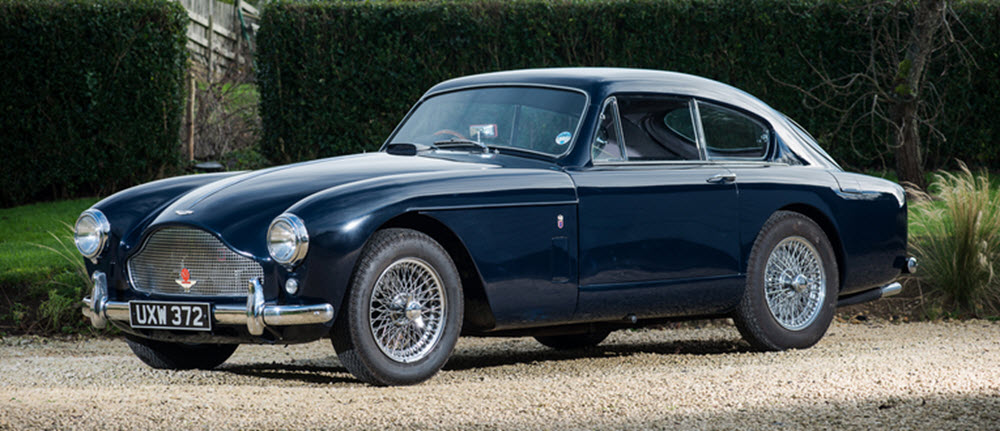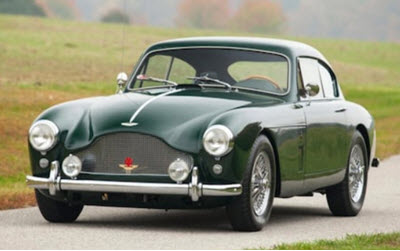Aston Martin DB 2/4 Mark III

The Aston Martin DB 2/4 Mark III is my dream car.
The Aston Martin DB 2/4 Mark III was a sportscar produced in 1957-1959. It was available in three body styles: 2-seat coupé, 2-seat drophead and 2+2 hatchback.
In Iam Fleming’s novel Goldfinger, the British Secret Service agent James Bond drives a DB Mark III, although Fleming calls it a DB III. In Fleming’s novels, this is the only Bond car to feature special gadgets. When the novel Goldfinger was turned into a movie, Bond drove an Aston Martin DB5 instead, which helped that car become one of the world’s most legendary sportscars.
In total, 551 DB Mark III cars were produced, most of them 2+2 hatchbacks. The 2-seat drophead coupé was made in 84 units, while the number of 2-seat fixed head coupés was no more than five. All the fixed head cars were made close to the end of the production period for the DB 2/4 Mark III and were given te mid-spec DBD engine. Unlike the hatchback, all the 2-seaters had conventional hinged boot lids.
Short facts about the Aston Martin DB 2/4 Mark III
| Manufacturer | Aston Martin |
| Class | Sports car |
| Production period | 1957–1959 |
| Number of cars produced | 551 |
| Body style | 2+2 hatchback 2-seat fixed head coupé 2-seat drophead coupé convertible |
| Layout | FR layout |
| Engine | 2.9 L Lagonda I6 |
| Wheelbase | 2515 mm |
| Length | 4369 mm |
| Width | 1651 mm |
| Height | 1359 mm |
| Curb weight | 1,361 kg |
Configuration
Engine etc
 Standard engine
Standard engine
The standard engine was a DBA with twin SU carburettors. It could produce 162 hp (121 kW). An optional dual-exhaust system claimed to bring this number up to 178 hp (133 kW). With the dual-exhaust system, the max speed was 120 mph (193 km/h) and the car could do 0-60 mph (0-97 km/h) in 9.3 seconds.
Optional mid-level DBD engine
Out of a total of 551 cars, 47 were fitted with this optional engine. It was a DBD engine with triple SU 1.75” carburettors and a dual exhaussystem, capable of producing 180 hp (134 kW).
Optional high-output DBB engine
A high-output DBB engine was also available as an option, but was selected for only ten cars.
This engine came with three twin-choke Weber 35 DCO 3 carburettors, extra long duration camshafts, high-compression 8.6:1 pistons, and a dual-exhaust system, and it produced 195 hp (145 kW).
DBC competition engine
One Mark III car was fitted with the special DBC competition engine, with racing camshafts and special connecting rods. The compression pistons were for very high compression, but it is unknown exactly how high, possibly as much as 9.5:1. There were three twin-choke Weber 45 DCO 3 carburettors. Allegedly, this configuration produced 214 b.h.p.
Clutch
Hydraulically operated clutch
Steering
Worm-and-sector steering
Brakes
After the first one hundred cars, all following Mark III cars had Girling disc brakes as standard on the front wheels. Also, many owners of the older cars had their cars upgraded with this type of brakes.
Exterior
The front grille designed for the DB 2/4 Mark III would go on to become emblemic for Aston Martin cars.
After the first few cars had been assembled, the design was changed somewhat; the tailfins were modified to fit rear lights from the Humber Hawk.
Optionals
- One of the most exiting optionals for the Mark III was the Laycock-de Normanville overdrive.
- It was actually possible to order a Mark III with automatic transmission, but only five such cars were produced (out of a total of 551 cars).
